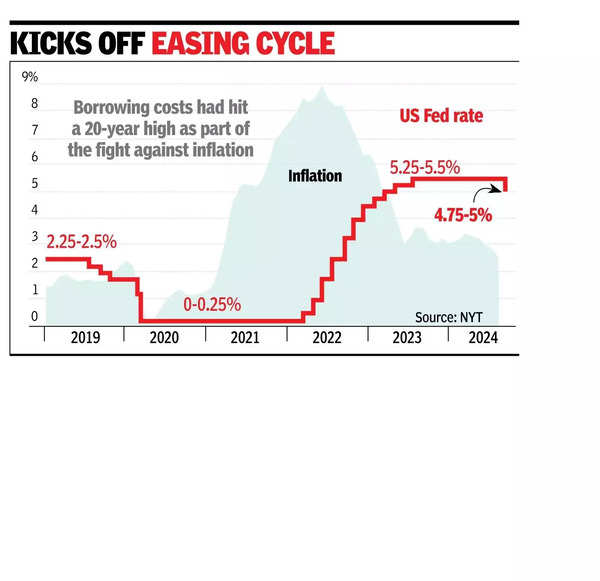Projections released following their two-day meeting showed a narrow majority, 10 of 19 officials, favoured lowering rates by at least an additional half-point over their two remaining 2024 meetings.

The Federal Open Market Committee voted 11 to 1 to lower the federal funds rate to a range of 4.75% to 5%, after holding it for more than a year at its highest level in two decades. Wednesday’s decisive move highlights the growing concern among policymakers over the employment landscape.
“The committee has gained greater confidence that inflation is moving sustainably toward 2%, and judges that the risks to achieving its employment and inflation goals are roughly in balance,” the Fed said in a statement, adding that officials are “strongly committed to supporting maximum employment” in addition to bringing inflation back to their goal.
Policymakers pencilled in an additional percentage point of cuts in 2025, according to their median forecast.
Governor Michelle Bowman dissented in favour of a smaller, quarter-point cut, the first dissent by a governor since 2005, and the first dissent from any member of the FOMC since 2022.
In their statement, policymakers said they will consider “additional adjustments” to rates based on “incoming data, the evolving outlook and the balance of risks.” They also noted that inflation “remains somewhat elevated” and job gains have slowed. The central bank raised rates 11 times, bringing its benchmark to a two-decade high in July 2023.
Since then, inflation has cooled considerably and – at 2.5% – is nearing the Fed’s 2% target. And while the labour market has weakened, there’s no clear indication the US economy is in recession or on the cusp of falling into one. Layoffs remain low, consumers are still spending and economic growth is strong.
Still, there are growing signs of strain. Excess savings that helped support Americans in recent years have run dry, and delinquency rates are rising. An increase in job losses could trigger a pullback in spending and slow the economy. The muddied economic picture has increased uncertainty and spurred divisions among Fed officials over the best path forward for policy.
Some are anxious to curb labour-market weakness before it spirals into more pain. Others worry that cutting rates too quickly may reignite demand and keep inflation elevated.
